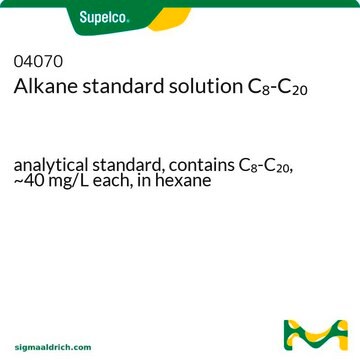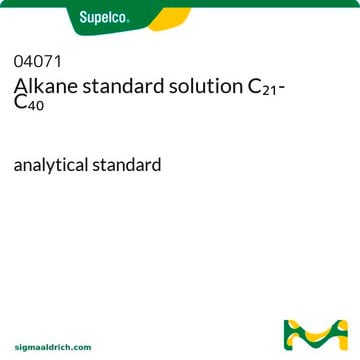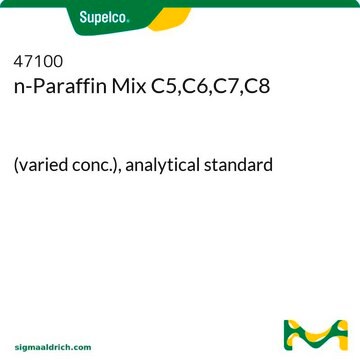40147-U
C8-C40 Alkanes Calibration Standard
in dichloromethane (varied)
About This Item
Produtos recomendados
Certificado de análise (CofA)
current certificate can be downloaded
embalagem
pkg of 1 mL
concentração
in dichloromethane (varied)
técnica(s)
HPLC: suitable
gas chromatography (GC): suitable
aplicação(ões)
petroleum
formato
multi-component solution
temperatura de armazenamento
2-8°C
Categorias relacionadas
Aplicação
Outras notas
Analito
Palavra indicadora
Warning
Frases de perigo
Declarações de precaução
Classificações de perigo
Carc. 2 - Eye Irrit. 2 - Skin Irrit. 2 - STOT RE 2 - STOT SE 3
Órgãos-alvo
Central nervous system, Peripheral nervous system,Central nervous system,Cardio-vascular system,Eyes
Código de classe de armazenamento
6.1D - Non-combustible acute toxic Cat.3 / toxic hazardous materials or hazardous materials causing chronic effects
Classe de risco de água (WGK)
WGK 2
Ponto de fulgor (°F)
Not applicable
Ponto de fulgor (°C)
Not applicable
Choose from one of the most recent versions:
Já possui este produto?
Encontre a documentação dos produtos que você adquiriu recentemente na biblioteca de documentos.
Os clientes também visualizaram
Nossa equipe de cientistas tem experiência em todas as áreas de pesquisa, incluindo Life Sciences, ciência de materiais, síntese química, cromatografia, química analítica e muitas outras.
Entre em contato com a assistência técnica








